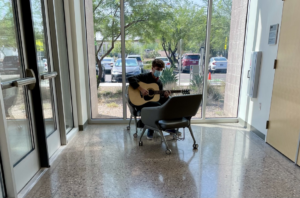Enriching Online Education through E-Service-Learning

By: Dr. Jennifer A. Maddrell
A recently published study of online learning by the Babson Survey Research Group and the College Board reports that over 6.7 million postsecondary students in the U.S. were taking at least one online course in the fall of 2011. Given the stunning attention paid to Massively Open Online Courses (MOOCs), the 2013 Higher Education Edition of the New Media Consortium’s Horizon Report predicts continued growth and influence of online learning as either a supplement or alternative to face-to-face courses. While most of the 2,800 college and university leaders participating in the Babson study felt online students’ learning outcomes were on par with face-to-face counterparts, approximately 40 percent of the academic leaders feared that a lack of acceptance of online education by employers was a potential barrier to the widespread adoption of online learning. Is this fear based on the reality that it is difficult for higher education institutions to offer the geographically separated online students the same applied learning opportunities available to campus-based students?
Service-learning is one example of an applied learning opportunity that is prevalent within many U.S. colleges and universities. The National Service-Learning Clearinghouse (NSLC) describes service-learning as a diverse set of strategies and initiatives that blend community service with instruction and learner reflection. Campus Compact, an association of 1,200 U.S. higher education institutions with approximately 6 million students, was formed in 1985 to help facilitate campus-based civic engagement, including service-learning. Campus Compact’s 2012 Annual Membership Survey reports that 95 percent of members offer service-learning courses. Both the NSLC and Campus Compact websites offer a wealth of resources to support facilitators, researchers, and students involved in service-learning programs.
While the physical separation of online students from the campus poses a significant challenge to participating in service-learning opportunities, pioneering educators are attempting to offer equivalent learning experiences to online students. In a recent article published in the Journal of Higher Education Outreach and Engagement, authors Walder, Widener, and McGorry describe e-service-learning in which the instruction and (or) service-learning activities are conducted online. The authors set out to identify the types, outcomes, and best practices of e-service-learning projects published in leading online learning or service-learning journals. Unfortunately, little research was found on e-service-learning outcomes. However, their review suggested a range of e-service-learning types in which either the instruction or the service components (or both) were conducted virtually, as well as a set of potential best practices associated with technology, communication, and course design. From a technology standpoint, once the technical capacities of the students, the community-based organization (CBO), and the instructor are determined, training is needed on the available synchronous and asynchronous technologies. In addition, communication of expectations is crucial to a successful e-service learning program, including a memorandum of understanding between both the student and instructor, as well as the student and the CBO. Regarding course design, the authors suggest traditional service-learning principles apply, such as connecting the service activities directly to learning objectives, incorporating opportunities for student reflection, and ensuring faculty commitment and feedback.
Online learning offers higher education institutions and students tremendous opportunities, but designing equivalent applied learning experiences for both campus-based and online students remains a challenge. Just as service-learning has a rich history in higher education, e-service-learning may offer online students an enriched learning experience through real-world application of the course content.
 Dr. Jennifer A. Maddrell serves as the Assistant Editor of the Journal of Computing in Higher Education and works as a freelance instructional designer. She is appointed as an adjunct Assistant Professor at Old Dominion University in the Instructional Design and Technology Program. Jennifer has co-hosted hundreds of webcasts on EdTechTalk.com and has written and presented numerous papers and book chapters related to online and distance learning. Find Jennifer on Twitter @jenm
Dr. Jennifer A. Maddrell serves as the Assistant Editor of the Journal of Computing in Higher Education and works as a freelance instructional designer. She is appointed as an adjunct Assistant Professor at Old Dominion University in the Instructional Design and Technology Program. Jennifer has co-hosted hundreds of webcasts on EdTechTalk.com and has written and presented numerous papers and book chapters related to online and distance learning. Find Jennifer on Twitter @jenm







0 Comments
Leave a Comment
Your email address will not be published. All fields are required.